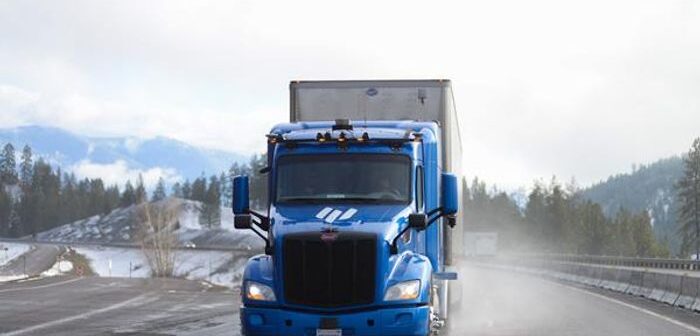Embark Trucks, which is developing autonomous technology for the trucking industry, has successfully completed on-road testing of its systems in snowy conditions in Montana, USA.
The testing was conducted to assess the performance and safety of Embark’s Vision Map Fusion (VMF) technology in geographies that experience severe winter weather. The company states that results from the testing demonstrated that in approximately 90% of runs through the snowy conditions under study – which could result in delays for traditional HD map-based autonomous driving systems – VMF should operate successfully, or pause and resume travel within acceptable shipper delivery windows.
“When we set out to develop our autonomous truck solutions, we planned to create a system that is capable of operating safely across America in all kinds of road conditions, broadening our scope to serve parts of the country that may be limited by snow or inclement weather,” said Alex Rodrigues, CEO of Embark.
“While we continue to focus on our existing commercialization timeline, the validation of our VMF technology for use in northern states and regions that regularly experience seasonal snowy weather will prepare us for long-term deployments and growth, and help us provide the most flexible solution possible for our carrier partners.”
Beginning in February, the test program utilized Embark-powered trucks traveling on a 60-mile (96.5km) roundtrip route on public roads between Clinton and Missoula, Montana, in varying winter weather situations. In addition to on-road testing, Embark developed a comprehensive weather model using over eight billion historical weather data points – dating back over 10 years on all major US routes – to analyze the impact of snow at a lane level across the USA.
The testing and weather analysis show significant technical and commercial promise. Embark’s testing and performance review indicated that VMF worked within tolerance thresholds for safe operation in snowfall rates up to 1/6in per hour (4.2mm/h) and with snow accumulation of 1in (25mm) on the road over three hours, conditions that cover the vast majority of snowy weather based on Embark’s analysis.
Combining these performance results with historical weather patterns and typical shipper delivery timelines, Embark was able to estimate expected delivery performance. On northern lanes – those starting or ending outside of the US Sunbelt – historical data shows that roughly one in five runs experience some snowy conditions. Embark estimates its VMF system will operate within acceptable shipper delivery windows approximately 90% of the time on such runs. Embark will look to refine these initial findings in time through additional modeling and partner insights in order to account for associated considerations such as ice formation, sleet and heavy winds.
By relying heavily on the camera-based sensing modality in snowy conditions, while also understanding and accounting for the degraded states of lidar returns and map conditions, Embark’s says its VMF is capable of filling in the gaps and mitigating the uncertainty created by accumulating snow on the roadway, unlocking critical shipping lanes and increasing uptime beyond the Sunbelt where inclement weather can hamper operations.


